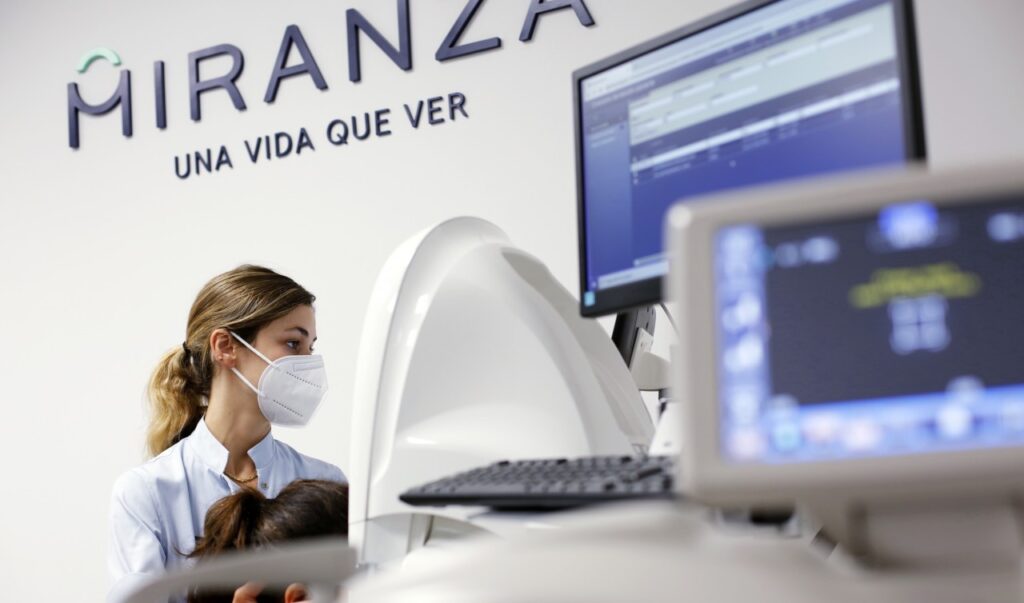
Eight out of ten patients visiting Miranza’s centres for the first time suffer from a disease to some degree
The most common eye problems are refractive errors, followed by presbyopia, cataracts, AMD and dry eye, with cataract surgery being the most common procedure.
82% of patients who come for a first eye check-up suffer from an eye disease to some degree and 22.6% require surgery to solve their problem, according to a clinical study carried out among 444 patients of all ages, who have come for the first time to one of the 13 centres included in the study (out of the 30 Miranza centres in Spain).
According to the report, which was coordinated by Dr Ronald Sánchez Ávila, a retina specialist and R&D director at Miranza Madrid, the most common eye problems are refractive errors detected in 74% of the eyes checked, presbyopia (33.2 %), cataract (16.9%), AMD (7.7%) and dry eye (6.0%). Several of these eye issues can occur in the same person (hence the sum of percentages exceeds 100%).
Astigmatism stands out (58.8% of the eyes studied) among the high rate of refractive errors, followed by hyperopia (36.3%) and myopia (35.1%), i.e. problems that, as with other disorders, can also appear simultaneously in the same patient. According to the data analysed, the type of refractive error clearly varies depending on the age group, since myopia at an early age is low, while a peak is observed between the ages of 19 and 40, before decreasing again. On the other hand, hyperopia occurs more frequently in childhood (under 12) and in adulthood (over 65), while the frequency of astigmatism also increases with age.
“Patients suffering from refractive errors usually go to their optician, have their vision corrected and repeat this process over the years. However, apart from glasses, it is sometimes necessary to have a medical assessment to explore other types of alterations. Therefore, a comprehensive examination and diagnosis by an ophthalmologist is essential, as well as following a series of visual hygiene guidelines to slow down the progress of the refractive error”, says Dr Sánchez.

Reasons for an appointment
The main reasons for patients to ask for an appointment at Miranza for the first time are, in this order, general check-up (39.3%), vision loss (25.5%), ocular surface symptoms (12%) and surgical interest (10.9%).
As age increases, the frequency of eye diseases also does, with presbyopia, cataracts and retinal pathologies increasing the most in middle age, as expected, and with the crucial onset age being 41 years. On the other hand, strabismus, amblyopia and eye allergies are more common in people under the age of 25.
Surgical indication
Regarding the indication for surgery, it can be seen that the largest numbers are related to the anterior segment of the eye, with cataract being the most frequent (41.8%), followed by PRK laser refractive surgery (13.4%) and refractive surgery with intraocular lens (ICL) implantation (8%). On the other hand, intravitreal injections (Anti-VEGF) are increasingly common as a chronic treatment in people suffering from AMD (8%).
“We work as highly specialised and overarching teams, so, if the specialists in any of our areas deem it necessary, a Miranza patient can leave their first appointment with all the diagnostic tests performed and analysed, along with a scheduled surgery to treat their disease as soon as possible”, concludes Dr Sánchez.
The clinics that participated in the clinical study were Miranza Begitek (San Sebastian), Miranza COI (Bilbao), Miranza IBO (Palma de Mallorca), IMO Grupo Miranza (Barcelona and Madrid), Miranza IOA (Madrid), Miranza Clínica Muiños (Santa Cruz de Tenerife), Miranza Oculsur (Jerez), Miranza Ókular (Vitoria), Miranza Ophthalteam (Madrid), Miranza Clínica Palomares (Benidorm), Miranza Virgen de Luján (Seville) and Vissum Grupo Miranza (Alicante).